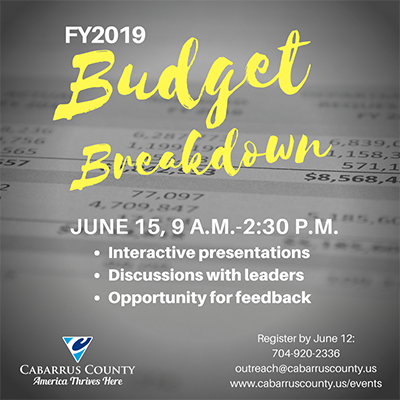
In this series, ELGL co-founder Kent Wyatt poses the question and a guest columnist answers it. This week, Lauren Tayara, Cabarrus County, NC Budget Analyst, writes about increasing the readability of your organization’s budget document.
The first thing that comes to mind when asked about document design is my high school yearbook class. Let me take you way back to 2004. I was an awkward 10th grader in Ms. Chapman’s yearbook class. Ms. Chapman was the type of teacher you disliked at the moment but appreciated later. This woman drilled clean lines, uniform layouts, and active captions into our heads. It’s a good thing because that was the only time I ever learned about document design. From reports to manuals, presentation was always a part of what I did.
My main takeaways from Ms. Chapman were:
- Be consistent throughout.
- Follow a template.
- Put yourself in the readers’ shoes.
When I started my career in local government (two years ago), I was tasked with revamping the budget book using GFOA guidelines. I learned the rules inside and out. Although GFOA has certain requirements, I took it upon myself to fill in the blanks so that we were presenting our budget in an understandable way. Understanding the budget isn’t easy for the average citizen so I used presentation and design to make the book more readable.
Our budget team is myself and my supervisor with contributions from multiple departments. Before I was hired, there was only one person who built the budget and content was (understandably) the priority. We use Microsoft Word, Excel and Adobe Acrobat to PDF the entire book. It’s a manual process.
Here are three suggestions to make your budget document look better and more readable:
- Incorporate your brand – “Be consistent” is what I heard Ms. Chapman say as I flipped through the document for the first time. Luckily, the County was also going through a rebranding at the time. I contacted Communications and requested a style guide, including the new color pallet. I manually changed colors using our RBG color pallet. Yes, I have most of them memorized at this point. It makes a difference whether you grab any dark blue versus the correct dark blue. All of our charts and tables got a makeover to match the brand.
- Tab it out – Most budget books have main tabs, but I’d suggest creating sub-sections. To make transitions clear, I created my own template – yep, just like Ms. Chapman taught me – for uniformity across sections. The template specified where to put colors, lines, font sizes and font styles. I made sure each main tab had an introduction to the topic for clarity. At that point, everything started to come together to flow so much better.
- Break it up – People look at those rows of words and automatically say, “nope” right before flipping to the next page. I “put myself in the readers’ shoes” like Ms. Chapman said. I flipped through the entire budget book and wherever I saw big, boring blocks of text, I added pictures, sub-headers, bullets, and lines to fit with my template. In addition to using our internal photo collection, I contacted a few outside agencies and requested local photos of businesses, logos, etc. All of these methods break up the text to make reading a whole page less daunting.
What I Learned
Despite what the haters say, people look at your budget document. At the very least, budget analysts look at each other’s’ budget documents. Our Commissioners noticed and publicly thanked the budget team for making the budget document better looking and more readable. Our overall scores on the GFOA award increased from the previous year. Not only did I make the budget book look amazing (if I do say so myself) this was also an awesome opportunity to get to know the budget inside and out.
I thank my supervisor for recognizing my interest and strength in design basics. It made me happier and a more productive employee. Design isn’t for everyone, but there are simple ways for you to make “beautiful budget books.” Even though you weren’t drilled by Ms. Chapman, I hope that you learned a few basics to implement in your budget document.
